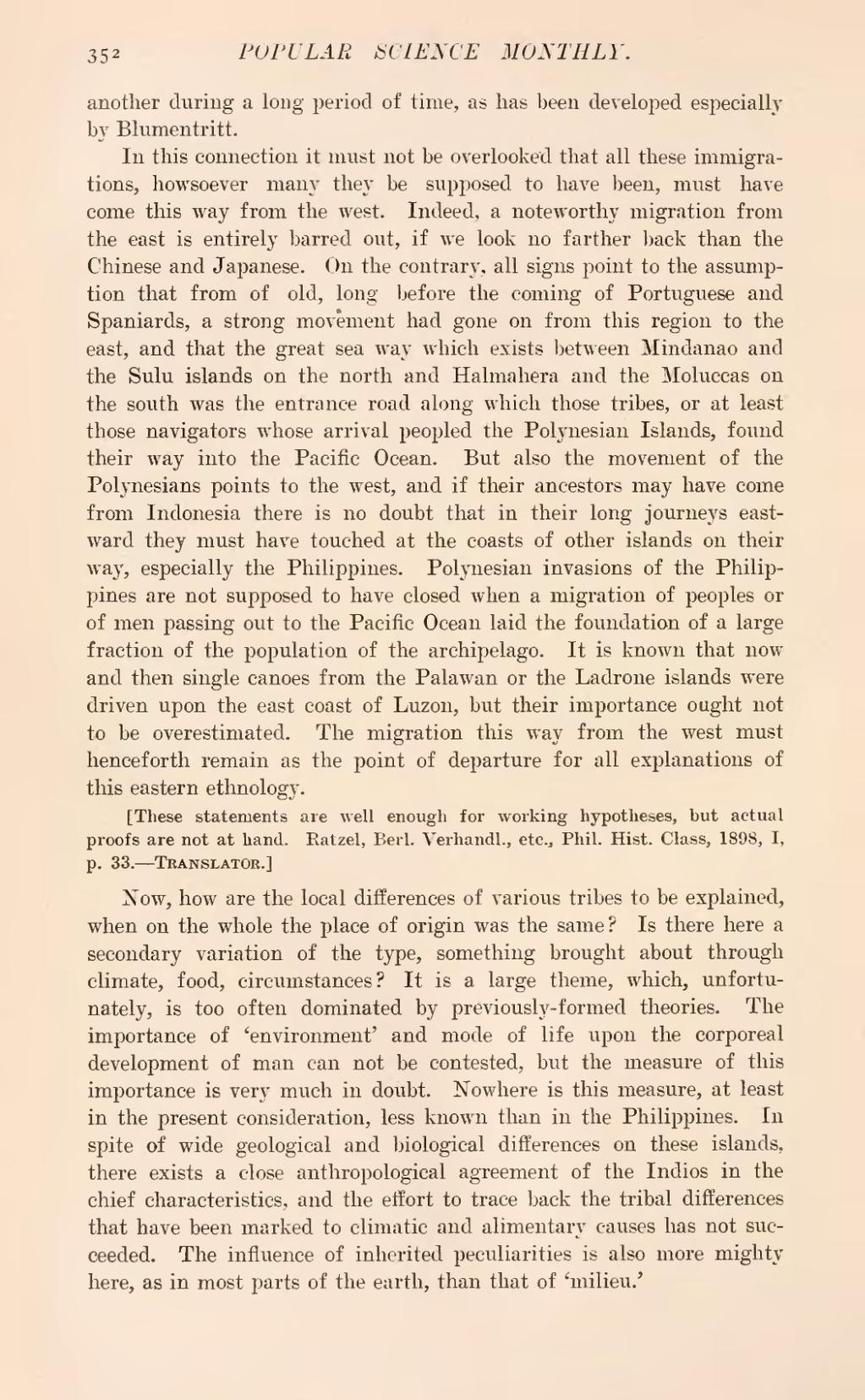another during a long period of time, as has been developed especially by Blumentritt.
In this connection it must not be overlooked that all these immigrations, howsoever many they be supposed to have been, must have come this way from the west. Indeed, a noteworthy migration from the east is entirely barred out, if we look no farther back than the Chinese and Japanese. On the contrary, all signs point to the assumption that from of old, long before the coming of Portuguese and Spaniards, a strong movement had gone on from this region to the east, and that the great sea way which exists between Mindanao and the Sulu islands on the north and Halmahera and the Moluccas on the south was the entrance road along which those tribes, or at least those navigators whose arrival peopled the Polynesian Islands, found their way into the Pacific Ocean. But also the movement of the Polynesians points to the west, and if their ancestors may have come from Indonesia there is no doubt that in their long journeys eastward they must have touched at the coasts of other islands on their way, especially the Philippines. Polynesian invasions of the Philippines are not supposed to have closed when a migration of peoples or of men passing out to the Pacific Ocean laid the foundation of a large fraction of the population of the archipelago. It is known that now and then single canoes from the Palawan or the Ladrone islands were driven upon the east coast of Luzon, but their importance ought not to be overestimated. The migration this way from the west must henceforth remain as the point of departure for all explanations of this eastern ethnology.
[These statements are well enough for working hypotheses, but actual proofs are not at hand. Ratzel, Berl. Verhandl., etc.; Phil. Hist. Class, 1898, I, p. 33.—Translator.]
Now, how are the local differences of various tribes to be explained, when on the whole the place of origin was the same? Is there here a secondary variation of the type, something brought about through climate, food, circumstances? It is a large theme, which, unfortunately, is too often dominated by previously-formed theories. The importance of ‘environment’ and mode of life upon the corporeal development of man can not be contested, but the measure of this importance is very much in doubt. Nowhere is this measure, at least in the present consideration, less known than in the Philippines. In spite of wide geological and biological differences on these islands, there exists a close anthropological agreement of the Indios in the chief characteristics, and the effort to trace back the tribal differences that have been marked to climatic and alimentary causes has not succeeded. The influence of inherited peculiarities is also more mighty here, as in most parts of the earth, than that of ‘milieu.’
